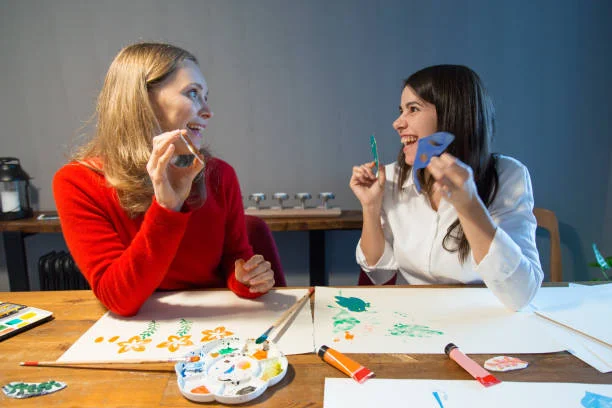Are you drawn to the healing power of creativity and wondering how do I become an art therapist? If you’re passionate about helping people navigate emotional and psychological challenges through artistic expression, art therapy could be your calling. This unique profession blends clinical psychology and visual arts, enabling therapists to work with a wide variety of individuals—from children with developmental disorders to adults coping with trauma or aging. In this guide, we’ll walk you through the essential steps, educational requirements, and career pathways to become a professional art therapist.
What Does an Art Therapist Actually Do?
Art therapists, also known as art psychotherapists, use the creative process of making art to improve clients’ mental, emotional, and even physical well-being. Their work often focuses on people who struggle to express themselves through words—whether due to trauma, mental health issues, learning disabilities, or communication challenges.
These professionals create safe, non-verbal therapeutic environments where individuals can explore and express complex emotions. Sessions may be one-on-one or group-based, and therapists work in a variety of settings, including:
- Hospitals and healthcare facilities
- Schools (including special education)
- Rehabilitation centers
- Mental health services
- Prisons and probation systems
- Private practices
The core goal is to help clients develop insight, self-awareness, confidence, and healing through art.
There’s plenty more where that came from—browse our other helpful content!
What Education Do You Need to Become an Art Therapist?
The path to becoming an art therapist starts with obtaining the right academic background. A master’s degree in art therapy or art psychotherapy is essential for entry-level practice. These programs are designed to combine both psychological theory and artistic practice in a deeply integrated way.
Before you apply for a graduate program, you’ll need:
- A bachelor’s degree—usually in art, psychology, or a related field.
- Studio art experience, demonstrating skill and versatility in various media such as drawing, painting, digital art, or sculpture.
- Foundational psychology classes—most often covering topics like developmental and abnormal psychology.
In most graduate programs, students complete:
- A minimum of 100 hours of supervised practicum.
- At least 600 hours of supervised clinical internship.
- Graduate coursework in:
- Art therapy theories and assessment
- Psychopathology
- Counseling and therapeutic relationships
- Human development and psychological theories
- Multicultural competency and cultural humility
- Group therapy
- Research and ethics
- Studio art practice and creativity studies
Programs may also explore specializations such as trauma studies, addiction recovery, family therapy, or medical art therapy.
Choosing the Right Program: What to Look For
So, how do you know if an education program will truly prepare you for a successful art therapy career?
Look for programs that are accredited by the Accreditation Council for Art Therapy Education (ACATE), under the Commission on Accreditation of Allied Health Education Programs (CAAHEP). These programs follow national educational standards and undergo a rigorous review to ensure they provide:
- A high-quality curriculum
- Qualified and experienced faculty
- Clinical training opportunities
- Preparation for post-graduate certification
The American Art Therapy Association (AATA) recommends choosing a CAAHEP-accredited program to ensure you’re on track for becoming a board-certified art therapist (ATR-BC).
Program formats vary and may be:
- Fully in-person
- Hybrid/low-residency
- Fully online (depending on the region and institution)
Life in Graduate School: What to Expect
Studying art therapy is not only about lectures and textbooks. It’s a dynamic, creative, and reflective process. You’ll read scholarly literature, engage in academic writing, journal introspectively, and actively make art as part of your own growth and clinical understanding.
Graduate students are known as scholar-practitioners—professionals who merge academic theory with practical application. You’ll learn not just how to guide others through emotional exploration via art, but also how to use art as a tool for your own reflective practice.
Is There a Path Through Undergraduate or Apprenticeship Programs?
While there are undergraduate majors and courses in art therapy, they serve more as pre-professional stepping stones. They’re not mandatory for graduate admission but can help you build a strong foundation and determine if this career path suits you.
There is also a Level 7 apprenticeship program in the UK for aspiring art therapists, but opportunities remain limited and competitive. You’ll need to apply directly through healthcare providers offering apprenticeships.
After Graduation: What Comes Next?
Once you complete your master’s program, the journey isn’t over. You’ll need to pursue:
- National credentialing, such as registration with the Art Therapy Credentials Board (ATCB).
- Licensing requirements vary by state, and you’ll need to obtain licensure based on the specific regulations of the state where you intend to practice.
Some professionals also opt to continue into doctoral programs, specialize further (e.g., in trauma or family therapy), or gain certifications in evidence-based practices like Cognitive Behavioral Therapy (CBT).
Career Paths and Opportunities
Art therapy is a versatile field. You could:
- Specialize in working with children, the elderly, or trauma survivors.
- Take on leadership roles as a senior therapist or department head.
- Train future art therapists as an educator or supervisor.
- Launch a private practice while continuing part-time work in institutions.
Professional organizations like the British Association of Art Therapists (BAAT) and American Art Therapy Association (AATA) provide continued education, networking, and support for career development.
Conclusion: Is Art Therapy Your Path?
If you’ve been asking yourself, how do I become an art therapist, this guide offers the clear answer: with dedication to both art and human connection, through structured graduate education, supervised practice, and continual learning. Art therapy is a deeply rewarding career that empowers you to support others in ways words alone often cannot.
By combining creativity, psychology, and compassion, you can make a lasting impact—one brushstroke, sculpture, or drawing at a time.
Loved this post? You’ll find even more just like it on our blog!







